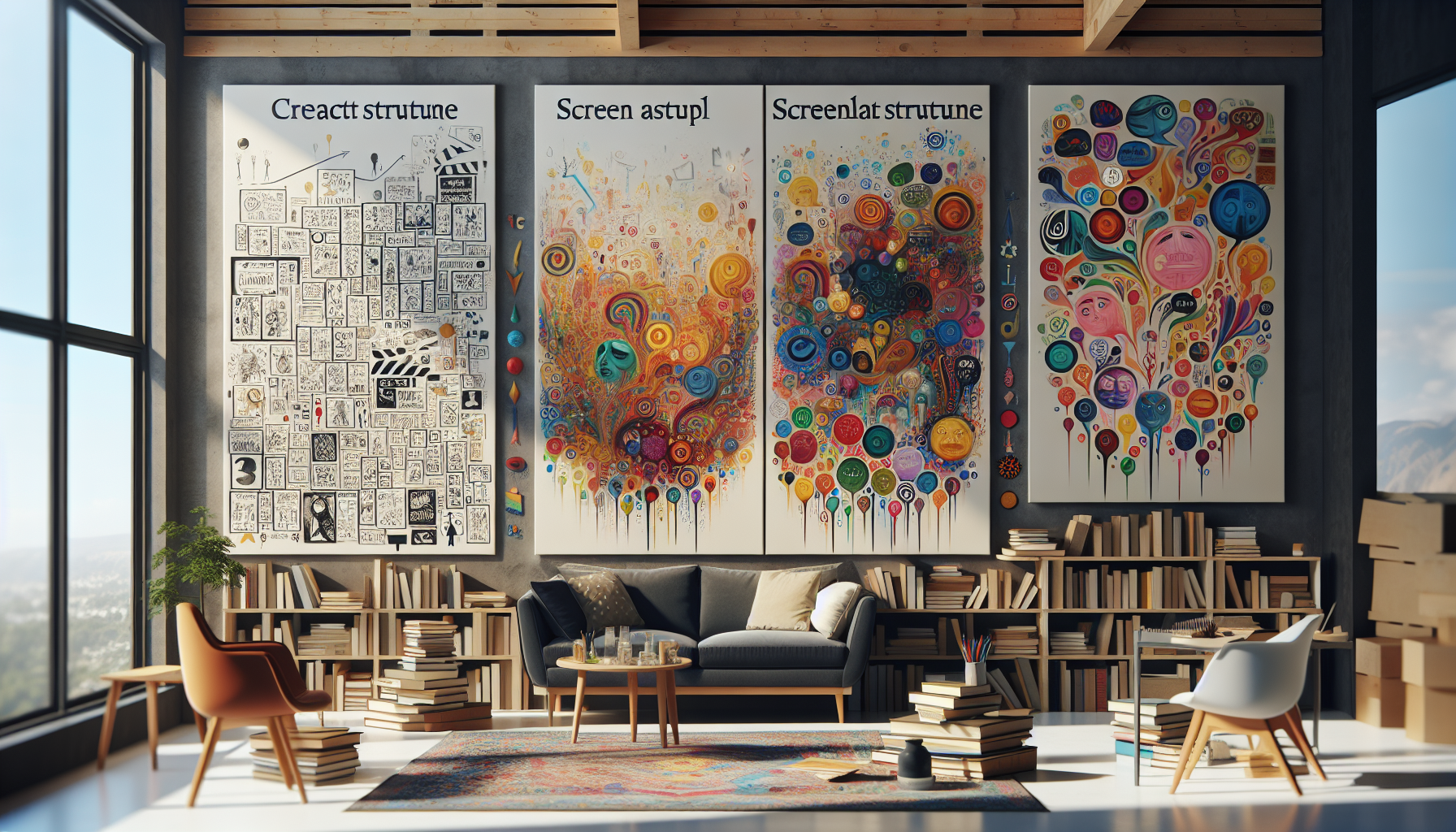
Unraveling the Mysteries of Screenplays: It’s More Than Just Fade In and Fade Out!
Ever wondered what makes a movie stick with you long after the popcorn’s gone cold? It’s not just the flashy visuals or your celebrity crush nailing their role. Nope. It’s the magic woven into the screenplays—the blueprint of any cinematic masterpiece. Let’s strip down this behemoth and see what makes it tick, shall we?
First Stop: The Almighty Structure
Think of structure as the skeleton of your screenplay: without it, you’ve just got a blob. A well-structured screenplay typically follows a three-act paradigm that Hollywood has been crushing on since forever.
Act One: Setting the Stage
Straight out of the gate, Act One is where you make your first impression. It’s got one job: Hook the audience. Introduce your protagonist, their world, and that pesky little thing called the ‘inciting incident’ that’s going to make your protagonist’s life oh-so-complicated.
Act Two: The Messy Middle
This isn’t just the longest part of the movie, but also where the salad gets tossed. Your hero faces obstacles, makes new friends or enemies (sometimes they’re hard to tell apart), and generally fights against the mounting odds. Keep the stakes high and the popcorn popping, because this is where you risk lulls if you’re not careful. Raise the stakes, my friend, and then raise them some more!
Act Three: Resolution on the Rocks
Just when it seems like every choice has led to ruin, Act Three swoops in. This final hurrah is where conflicts reach their peak, resolutions unfold, and your characters hopefully (depends on your genre) find some semblance of peace. It’s like the dessert after a fantastic meal – it better be good, or it leaves a bad taste!
Building Character: More Than Just Fancy Names
Characters are the heart and soul of your screenplay. No matter how twisty your plot, without solid characters, it’s just a fancy labyrinth that nobody cares about.
Making Them Real
A character’s zest comes from their flaws, quirks, and their unpredictable nature. Make them real, give them problems (yes, multiple), and watch your audience’s eyes glue to the screen. Remember, perfect is boring; it’s the flaws that make us root for someone.
Dialogue: It’s Not What They Say, But How They Say it
Dialogue isn’t just about moving the story forward; it’s also about revealing hidden bits of your characters. The wit, the puns, the dramatic pauses. Oh, the drama! But beware, dialogue is a double-edged sword. Make it too on-the-nose, and you can hear the eye-rolls in the audience. Keep it too vague, and you’re just being cryptic.
Every line a character utters should peel back a layer, push the narrative or make someone (preferably not in the next room) laugh. And please, let’s keep the monologues to Shakespeare; keep it snappy, keep it moving, and keep it authentic.
Dialogue: The Secret Sauce
No, it’s not just about witty one-liners (though they can be a blast). Good dialogue serves multiple purposes: it conveys backstory (without giving us a history lesson), reveals character quirks (oh, she collects antique toenail clippers? Cool), and ramps up the tension (why yes, that ticking sound does make this conversation more intense).
Dialogue should sound like music, with rhythms and beats. Long, descriptive monologues in the midst of a chase scene? Hard pass. Quick, sharp exchanges during a quiet, emotional moment? Also no. Match the rhythm to the scene’s mood and watch your screenplay sing.
The Takeaway: It’s a Balancing Act!
Structure, characters, and dialogue are the three musketeers of screenplay writing. They work in tandem to keep the story engaging, dynamic, and amazingly memorable. Tweak one and you might just find your whole script doing somersaults. So, keep your tools sharp, your wit sharper, and for the love of cinema, make sure it’s entertaining!






